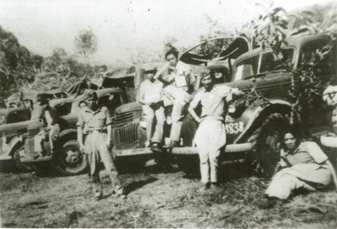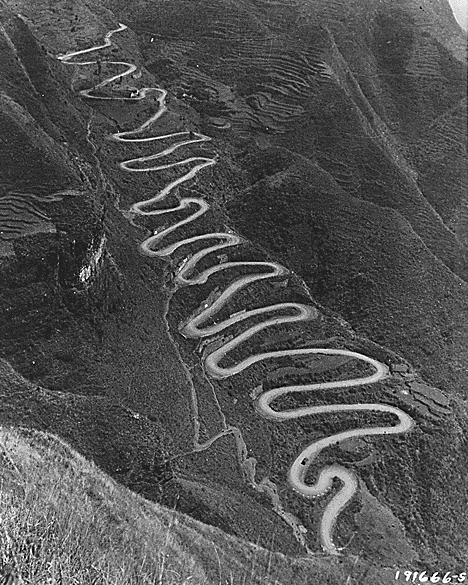Nanyang Volunteer
南侨机工
When the Sino Japanese War erupted on 7 July 1937, the Chinese government’s logistic concern was security of supply routes importing war materials into China. This led to the construction of the Burma Road linking Kunming with Yangon port in British Burma. The Burma Road eventually became China’s only link with the outside world.
The Chinese government also realized the lack of skilled drivers and mechanics in China. To solve this problem, they turned to China Relief Fund headed by Mr Tan Kah Kee to recruit drivers and mechanics from Nanyang, today’s South East Asia.
These drivers and mechanics are known as the Nanyang Volunteers, 南侨机工. The first notice appeared on 7 February 1939 and the first batch of 80 left Singapore on the Chinese New Year eve of 1939.
From February to September 1939, 3200 Nanyang Volunteers left in 15 batches and most eventually served on the Burma Road. Most of the Nanyang Volunteers were Chinese man but there were also some Malay and Indian men and four Chinese women.
Nanyang Volunteer, 南侨机工
The Nanyang Volunteers were recruited by China Relief Fund offices all over Nanyang. The recruitment offices had to ensure that each of them were physically fit, have no bad habits and to prevent Japanese agents from infiltrating the organization.
In Singapore, some candidates were rejected because their driving skills were not ideal. Eventually, the Singapore China Relief Fund office decided to train them at the driver’s school on the grounds of the Shuang Lin monastery.
Farewell Nanyang Volunteers
Nine of the fifteen batches or 80% of the Nanyang volunteers left from Singapore. Each batch was formed by volunteers from Singapore and the region. The arrival of volunteers to Singapore was intensively reported by the media while clan associations, shops and businesses sent food, clothing or offered free services as a gesture of support.
The earlier batches stayed at the Tongji Hospital (Thong Chai Hospital) but later batches were offered free accommodation at the Great Southern Hotel, the most luxurious hotel in Singapore Chinatown at that time and known as the Raffles hotel of Chinatown.
The departure of each batch attracted equal attention. The public and media turn out in full force at the Ee Hoe Hean or the harbor to bid the Nanyang Volunteers farewell.
Plight of Nanyang Volunteers
Half of the Nanyang Volunteers died during service. Many were killed by accidents on the Burma Road, malaria, and during Japanese air raids. Others were executed by the Japanese after the fall of Burma.
The invasion of Burma terminated the Burma Road and also left Nanyang Volunteers jobless. Many lived in poverty and were unable to find jobs because of discrimination by local Chinese.
Meanwhile, many civilians who supported the recruitment of Nanyang Volunteers were executed by the Japanese after the fall of Singapore and Malaya. A notable case is Venerable Pu Liang, abbot of Shuang Lin Monastery who was executed by the Japanese for allowing the volunteers to train in the monastery.
After the end of World War Two, half of the survivors managed to return to South East Asia. Many of those who chose to settle in China were persecuted during the Cultural Revolution. Some of the persecuted Nanyang Volunteers like female driver Li Yue Mei commit suicide as an act of political protest.
Honoring the Nanyang Volunteers
On 7 July 1946, just a year after World War Two, Overseas Chinese in Penang unveiled a monument to honor the Nanyang Volunteers. The following year, the Chinese community in Kuala Lumpur also built a monument in their memory.
Forty Two years later, the Yunnan Government dedicated a monument to the Nanyang Volunteers. By this time, the Chinese government recognizes Nanyang Volunteers as war heroes and surviving members received pensions and medical benefits.
In 2005, a new monument appeared in Wan Ding the last Chinese town before the Burma Road turned into Burma.
Every year, on the 7 July anniversary commemorating the Sino Japanese War, public memorial services are held to honor them. Researchers in China are also actively searching for surviving Nanyang Volunteers.
The memories of Nanyang Volunteers are also kept alive by exhibitions, memorials and publication of books.
On 25 June 2011, a group of Malaysians and a few Singapore drove from Ee Hoe Hean Club in Singapore to Kunming in memory of the Nanyang Volunteers.
Related articles:
|

 Nanyang Volunteer, 南侨机工
Nanyang Volunteer, 南侨机工 




